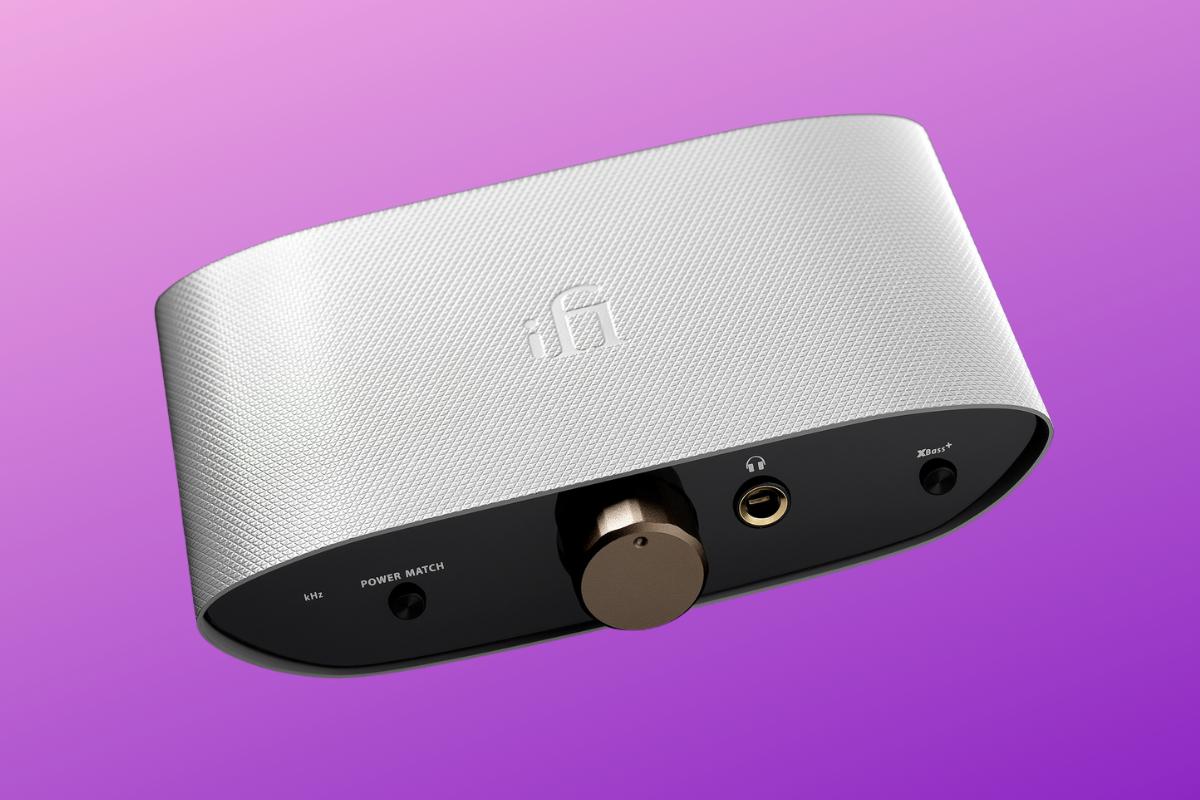TL;DR
If you need a DAC/Amp with good sound and great power for less than $100, it’s hard to beat iFi Audio’s ZEN Air DAC.
Intro
Back in March, iFi Audio introduced the ZEN Air Series, a new line of $99 products built on the foundation of their beloved ZEN Series, a product family that includes budget audiophile gems like the previously reviewed Zen DAC V2 ($189) or the ZEN Blue V2 ($199).
While the original ZEN gear is already amazingly affordable, the new ZEN Air line is designed to take iFi’s price/performance proposition to a whole new level.
For the first time, they have desktop/hi-fi gear that starts under $100, and they promise the same high-quality build and sound that people have come to expect from them.
The company originally announced four devices in the ZEN Air lineup, but only two have been released as of yet. Those are the ZEN Air DAC Desktop DAC/Amp, which I’m looking at today, and the ZEN Air Blue Bluetooth DAC, which I will review in the near future.
Both devices look a lot like the pricier ZEN products, but in order to achieve the lower price point, the ZEN Air products have hard plastic housings instead of metal. In the case of the ZEN Air DAC, it also loses the balanced amp circuitry, upgraded digital clock, and full MQA decoding capability of its more expensive sibling, the Zen DAC V2.
So… I’m sure you want to know how the ZEN Air DAC matches up with the excellent Zen DAC V2 and whether it’s worth the $99 bucks. Read on, and I’ll let you know the scoop!
Disclaimer: The iFi ZEN Air DAC was sent to us by iFi Audio in exchange for an honest, unbiased review. iFi Audio is a sponsor of Hifitrends.
Build/Features
As stated above, a quick look at the ZEN Air DAC evokes thoughts of the more expensive Zen DAC V2, but a closer look reveals significant differences.
Most noticeable is the plastic housing, which is textured and tinted to make it look like engraved aluminum. The plastic exterior makes the Air DAC ridiculously light, to the point you could hold it up with one finger, provided you can balance it. That said, the casing seems quite sturdy, with very little flex. It should hold up well unless you drop it from a high shelf or stomp on it by accident.

While it definitely doesn’t look or feel quite as premium as the Zen DAC V2, iFi did a good job of capturing its slick aesthetic, and to be honest I may prefer the lighter Grey color of the Air DAC to the Blue/Grey color of the DAC V2. Additionally, I love the look of the bronze-colored volume/power knob, which matches well with the matte grey exterior.
On the front panel of the ZEN Air DAC, you’ll find a large LED that designates the type and sample rate of the music file being converted, a “power match” button for the one-step gain control, the bronze power/volume knob, a 1/4“ single-ended headphone jack, and the Xbass button for iFi’s analog Bass boost.
In the rear, you have a standard USB-B jack, an RCA output, plus a 5v power jack for an external power supply (not included).

If you’re familiar with the Zen DAC V2, you’ll notice the Air DAC is missing a few features present on that model, like a balanced headphone jack, as well as the balanced output in the rear. The switch to change the rear RCA output from variable to fixed is also gone.
Also, keep in mind that the Air DAC doesn’t have the digital clock upgrades introduced in the ZEN DAC V2, plus it goes from a full MQA decoder to a renderer.
Needless to say, none of those things are absolutely necessary to get great sound out of a pair of headphones; it’s just worth mentioning in case those are features you’re looking for.

Despite the missing features, the main headline is iFi’s promise that the ZEN Air DAC still has the discrete components (same DAC & processing chips) and symmetrical channel layout of the more expensive ZEN DAC. So, in essence, it should outperform other gear at the same price point.
Sound
I connected the ZEN Air DAC to my HP ENVY X360 using the included USB cable and played some test tracks via the TIDAL Desktop App. As far as headphones go, I went with the Sennheiser HD560S, which retails for around $200.
I must say, I immediately fell in love with that combo as the synergy between the headphones and the DAC/amp was excellent. The neutral tuning of the 560S meshed really nicely with the somewhat warm-sounding Air DAC, which made those headphones sing.
For a $99 Desktop DAC/amp, the Air DAC was pretty clean and transparent and had decent detail. It also pulled this off without undue harshness up top, which is always good when you’re dealing with entry-level gear such as this.

In addition, it provided a deep controlled bass through the Sennheiser headphones, which was extremely satisfying alongside the rich midrange.
The 560S is known for its wide soundstage, and when listening to Macy Gray’s “Sweet Baby,” the Air DAC did a great job of reproducing the spaciousness of the recording thru these headphones. The horn, along with the guitar and drums, had the natural timbre that I enjoy from an amp. The sound was delicate yet refined, which surprised me at the sub-$100 price point.
That said, when I switched over to iFi Zen DAC V2, I was able to hear the difference between the upgraded DAC circuitry in the $189 unit compared to what you get in the $99 one. The DAC V2 provided even more detail and separation than the Air DAC and let you better hear the snap of the instruments. There was just more articulation of the bass, and the instrumental timbre was more realistic. It also sounded “airier” due to its more skillful handling of high-frequency reflections

On the other hand, the Air DAC wasn’t quite as “forward” as the more expensive DAC, replacing the analytical presentation of the V2 with a smoother, more gentle one. In some ways, I preferred the more laid-back perspective of the cheaper DAC (especially with the 560S), as it let the music “come to me” instead of charging out of the headphones.
In order to test the Air DAC’s ability to drive less efficient headphones, I tried it with a pair of Hifiman DEVA Pro Planar Headphones ($199), and I have to say it passed that test with flying colors, albeit on the high gain setting. It drove the headphones with plenty of authority, gusto, and clarity to boot.
That said, I found dynamic headphones like the 560S and even the Focal Elear to be more in the Air DAC’s wheelhouse because that’s where I heard the optimum dynamics and transparency.

Finally, I engaged the XBass+ bass boost function on the ZEN Air DAC to see if it worked as well as I’m accustomed to on the more expensive iFi DACs. The answer to that would be yes. I’ve always loved the iFi’s approach of analog bass boost, where they tastefully bump up the midbass without muddying the midrange, and nothing has changed in the $99 DAC. The XBass+ on the Air DAC did an amazing job of adding just the right amount of extra warmth when a headphone needed it.
The Wrap Up
In the final analysis, I find that iFi has done an awesome job of providing a remarkably capable DAC/Headphone Amp that anyone can afford. For $99, the iFI ZEN Air DAC provides a notable increase in audio quality from your phone, tablet, or computer. While it doesn’t give you the clarity and separation of the pricier ZEN gear, what it provides is good for the price point.
In addition, its gentle top end, rich midrange, and quality bass response give it a rich, engaging sound that I really liked. If you’re for a dirt cheap desktop DAC/Amp (that actually sounds good) to pair with your budget audiophile headphones, you should give the Zen AIR DAC a try!
Hifitrends is reader-supported. When you purchase through links on our site, we may earn an affiliate commission.

I’m an audio writer who started as a young audio salesman/consumer electronics professional back in the late 90s. That’s where I discovered the magic of 2-Channel sound. My hunger for great sound has led me on a delightful music quest that continues today.



Leave a Reply